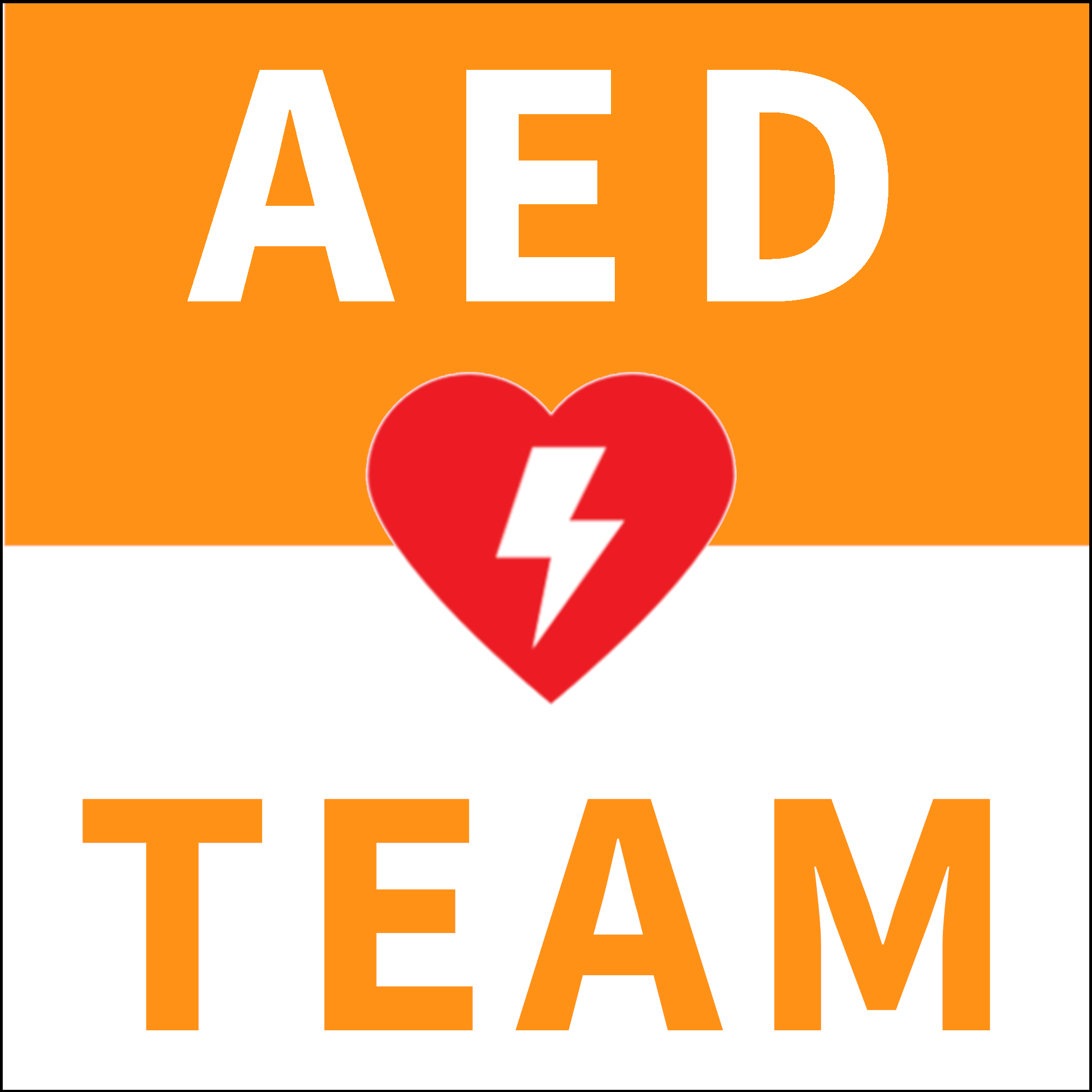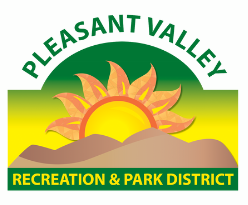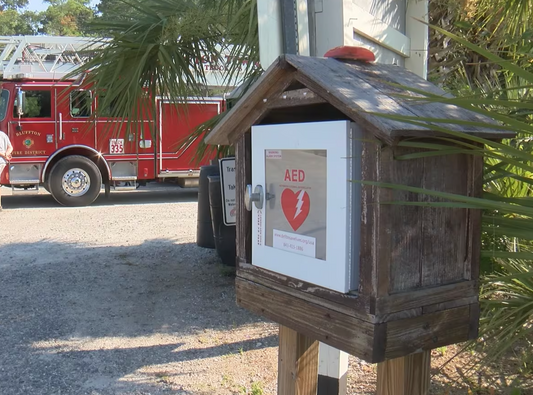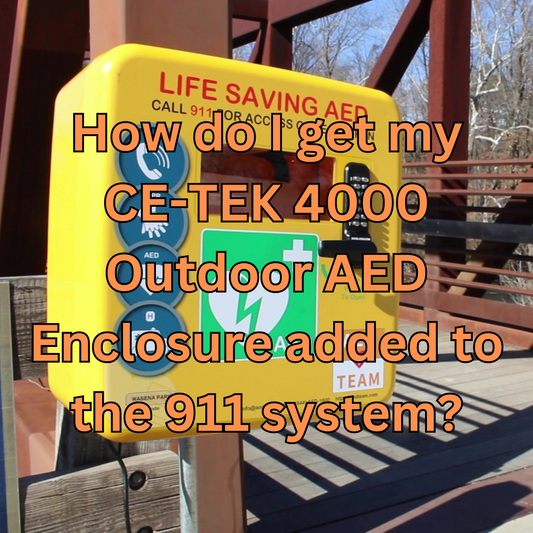Why does outdoor access to defibrillation matter?
Over 99% of United States Automated External Defibrillators (AEDs) are located indoors or in vehicles where they are not accessible to the public 24 hours a day. Public outdoor access to defibrillation is an important component of a comprehensive AED program because it allows rescuers to retrieve lifesaving equipment whenever it is needed.
Can I use an indoor cabinet outside?
AED enclosures built for indoor use lack protection from water, dust, and cold temperatures. Exposure of an AED to these conditions can cause permanent damage to the equipment, void the warranty, and result in the failure of the device making it unusable for a rescue. Outdoor AEDs should only be placed in outdoor rated AED enclosures.
Does the CE-TEK 4000 Outdoor AED enclosure require electricity?
The heating unit and LED lighting inside the AED enclosure require a 110V AC electrical connection to work. Secure access enclosures use a mechanical lock which does not require electricity to function. This allows AED units to still be accessible if there is a power failure. Locations which do not get freezing temperatures may opt to not connect their enclosures to electricity. We are able place custom orders for 20 or more enclosures to exclude heating units and lights at a reduced cost if these items are not needed.
How do rescuers retrieve an AED from a locked AED enclosure?
Rescuers call 911 and are directed to the AED enclosure if one is located nearby. The 911 telecommunicator will provide the caller with the access code to open the enclosure and retrieve the AED. It is imperative that the 911 center be provided with all AED enclosure locations and access codes during implementation of your outdoor AED program.
Does a locked AED enclosure delay care?
Calling 911 is one of the first links in the Cardiac Arrest Chain of Survival. Making this call ensures that the next level of care is on the way. The 911 telecommunicator is able to provide vital instructions on where to locate an AED enclosure and the access code to retrieve equipment.
While entering the lock code into the enclosure will take a few additional seconds, the enclosure helps to ensure that lifesaving equipment has not been stolen or tampered with prior to the rescue.
A retrospective review of AED theft news articles in the United States found that, while AED thefts are uncommon, several locations which had an AED stolen never deployed a replacement device.
Is there an unlocked version of the CE-TEK 4000 Outdoor AED enclosure available?
Yes, we carry an open-access version of the enclosure which does not require a keycode for entry.
Who can purchase a CE-TEK 4000 Outdoor AED enclosure?
There are no restrictions on who can purchase an AED enclosure. The end-user is responsible for providing their 911 center with the AED location and access code for the enclosure and confirming that this information has been added to the local dispatch protocol.
Where should the CE-TEK 4000 Outdoor AED enclosure be placed?
Outdoor AED enclosures should be placed in locations where there is heightened risk of a cardiac arrest event or a prolonged response time from EMS. The enclosure should be placed in a highly visible spot on a post or attached to a structure with multi-directional AED signage above the enclosure to increase visibility. The enclosure requires 110V AC electricity to power the heater and lighting so locations which already have electricity are ideal.
Examples of placements include:
- Parks and sports facilities (baseball, softball, football, and soccer fields; pickleball and tennis courts; pools and splash pads)
- Public gathering locations like concert venues, convention centers, stadiums
- Residential neighborhoods, community centers, and apartment complexes
- Shopping centers (single AED shared by multiple stores)
- Parking structures and lots
Has anyone used a CE-TEK Outdoor AED enclosure to save a life?
Yes. We were notified of the first rescue utilizing a CE-TEK enclosure in March 2021 at a pickleball court in Westfield, MA. A player collapsed during a match and CPR was immediately started by a bystander. The spouse of the bystander called 911 and obtained the access code to the enclosure. The AED was delivered within 55 seconds of the 911 call being placed and the first shock was delivered within 2 minutes of the arrest. The player was awake by the time EMS arrived and made a full recovery.
While outdoor access to AEDs is relatively new to the United States, it has been used across Europe for several years. Our manufacturer, who is based in the UK, has many additional rescue stories from incidents occurring across Europe.
Does the CE-TEK 4000 Outdoor AED enclosure need to be cooled?
No. The enclosure does not accumulate heat and remains around the same temperature as its surrounding environment during hot weather. A fan or cooling unit is not necessary for the enclosure. AED units are rated to 114 degrees Fahrenheit and US temperatures are rare to exceed this. For very hot environments, we do recommend placing the enclosure in shade to avoid direct sunlight if possible.
What weather can the CE-TEK 4000 Outdoor AED enclosure tolerate?
The CE-TEK 4000 is made of a double shell polycarbonate and contains a steel structural plate. All points of entry are sealed with rubber gaskets. The device has been lab tested to prevent intrusion of dust and powerful water jets. As such the enclosure will protect your AED against the most extreme weather conditions, including wind driven rain, snow, and sub-zero temperatures.
What is the Ingress Protection (IP) rating of the CE-TEK 4000 Outdoor AED enclosure and why does that matter?
IP rating comes from laboratory tests used to determine the amount of protection a device will provide against dust and water intrusion. The CE-TEK 4000 Outdoor AED enclosure has a IP 66 rating - this means that it is "dust tight" and protected against powerful jets of water. All AED units also have an IP rating - we recommend using high IP rated AED units, like the HeartSine samaritan 350P, for use in outdoor enclosures.
What other items can I place in the CE-TEK 4000 Outdoor AED enclosure? Are there additional uses?
Many agencies have transformed their CE-TEK Outdoor AED enclosures into full lifesaving stations with intranasal naloxone kits, epinephrine autoinjector kits, bleeding control, and small dry chemical fire extinguishers. Smaller AEDs allow for the placement of additional emergency equipment.
Some agencies provide enclosure codes to their responders to allow them access to emergency equipment caches without having to go through the 911 system. This is helpful for large scale events where it is helpful to have equipment available in multiple locations for responders who are on foot.
Can the CE-TEK 4000 Outdoor AED enclosure be customized to my agency / department / hospital?
Yes, for orders of 20 or more enclosures we can provide full customization of the front vinyl label so that you can include your logo and contact information on each enclosure. Enclosures are also available in red and green polycarbonate. Other customizations include the removal of electrics (for seasonal or warm weather placements), and open access (handle but no lock).
What maintenance is required for the CE-TEK 4000 Outdoor AED enclosure?
Enclosures require minimal maintenance. We recommend wiping the enclosure off a couple times per year and whenever it is visibly dirty. Once a year apply a coat of spray-on wax, lightly oil and work the lock keypad (twice a year for coastal locations), and check the enclosure for any damage.
AEDs need to be checked as per manufacturer recommendations to confirm readiness and that pads and batteries are in date. Some clients use the AED Sentinel monitoring system which provides a daily image of the AED readiness indicator and will transmit a text message and email if an AED status changes.
What if something in the CE-TEK 4000 Outdoor AED enclosure breaks?
All components are plug-and-play and easy to replace. AED TEAM stocks replacement parts in Virginia. If a heater were to fail, you can simply unplug it and remove it from the rail and then plug in and slide the new heater on. Light strips use a similar plug and are attached with adhesive. The graphics, lock, and latch mechanisms can be removed and replaced if needed.
The enclosure is covered under a 10 year manufacturer’s warranty. The heater and keypad lock are covered by a 5 year warranty.
How do I raise funds to get a CE-TEK 4000 Outdoor AED enclosure in my community?
The budget to fund a full installation of the CE-TEK 4000 Outdoor enclosure is roughly $2,500 per unit. This amount includes the enclosure, signage, an AED, and installation costs (roughly $400 for a licensed electrician to wire). The budgeted amount can be reduced with donated installation costs and use of an existing AED.
We suggest that champions seek out local funding sources for their project:
- Municipal grants from Parks and Recreation, Fire & EMS agencies, Public Health, and Neighborhood Development Programs
- Homeowners Associations and Apartment Communities
- Hospital Community Health and Outreach Department
- School, Civic, and Service organizations - Lions and Rotary Clubs, Sports Boosters, Parent Teacher Association
- Local fundraising / crowd sourcing
- Business Sponsorship (consider placement of “This Emergency Equipment Provided By…” signage at the enclosure to advertise the sponsor)




